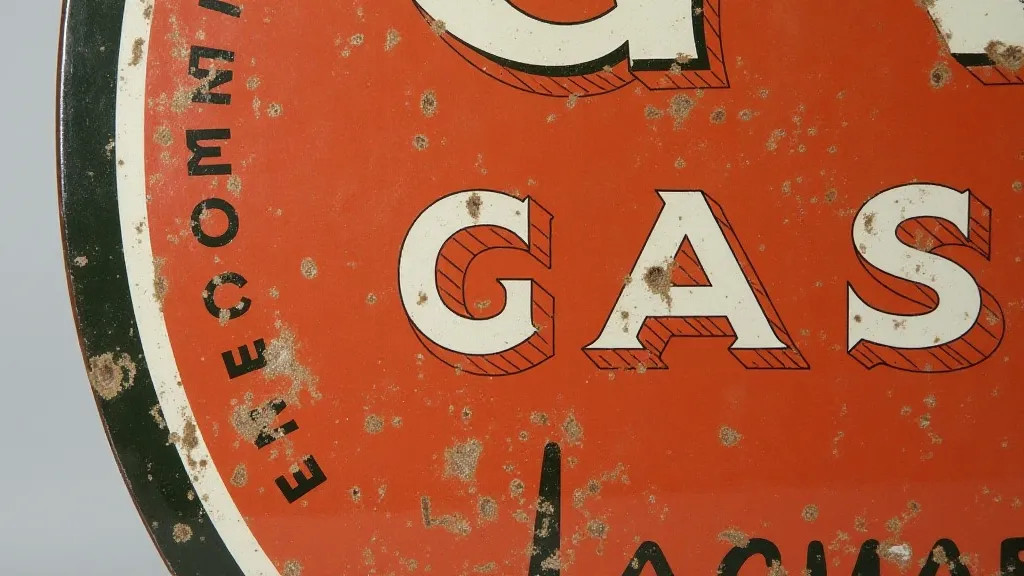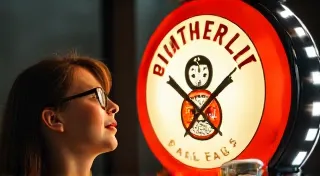Identifying Original vs. Reproduction Gas Station Signs
The allure of vintage gas station signs is undeniable. These relics of a bygone era evoke nostalgia, add character to collections, and often hold significant monetary value. However, the growing demand for authentic vintage gas signs has spurred a parallel industry – the creation of convincing reproductions. For collectors, restorers, and enthusiasts, the ability to differentiate between original signs and skillful fakes is absolutely critical. This guide provides a detailed look at the key indicators used to assess the authenticity of gas station signs.
Why Does Authenticity Matter?
The value difference between an original and a reproduction gas sign can be substantial. An authentic, well-preserved sign from a major brand like Sinclair, Shell, or Texaco can command prices ranging from hundreds to thousands of dollars. Reproductions, while often attractive, are worth considerably less – typically a fraction of the original’s value. Beyond the financial aspect, owning an authentic piece of history connects you to a tangible link to the past, a connection that's lost with a reproduction.
1. Examining Paint Application: The Key to Unveiling Secrets
Paint application is arguably the most crucial indicator of authenticity. Early signs were hand-painted or applied using rudimentary screen-printing techniques. Modern reproductions often use more advanced, automated processes that leave telltale signs of their modern origins.
- Original Signs: Look for inconsistencies in paint application. This could include slight variations in color shading, brush strokes (even when screened), and areas where the paint appears slightly thicker or thinner. Hand-painted signs often have subtle imperfections that reflect the artist’s skill and the limitations of the available tools. Older signs often show signs of weathering – minor chipping, fading, and oxidation – which are difficult to perfectly replicate. Look for “blushing” – a cloudy appearance caused by moisture trapped beneath the paint, particularly on porcelain signs.
- Reproduction Signs: Modern reproductions often exhibit a uniform, flawless paint finish. The paint may appear too "perfect," lacking the subtle variations and imperfections characteristic of hand-applied paint. Screen-printed reproductions might show a perfectly consistent mesh pattern, rather than the slightly irregular pattern of older methods.

2. Font Analysis: A Deeper Dive into Detail
Typography changes over time. While reproduction manufacturers often attempt to mimic vintage fonts, they frequently make subtle errors. Careful font analysis can reveal inconsistencies.
- Original Signs: Research the fonts used by gas companies during specific eras. Original signs will precisely match the fonts in use at the time. Pay attention to letter spacing, kerning (the space between specific letter pairs), and the overall feel of the lettering.
- Reproduction Signs: Reproductions may use fonts that are *similar* to original fonts but contain inaccuracies in letter shapes, spacing, or weight. A keen eye can spot these discrepancies. Look for fonts that are too clean or modern in appearance.

3. Manufacturing Details: From Porcelain to Metal
The materials and manufacturing processes used to create gas station signs evolved over the decades. Understanding these changes is vital for accurate identification.
- Porcelain Signs: Early porcelain signs were often made with thicker, heavier porcelain than later signs. Examine the back of the sign – original signs may have visible seams or irregularities in the porcelain, while reproductions often have a smoother, more uniform back. Look for the manufacturer's mark or stamp on the back. Research which manufacturers were active during the period the sign is purported to be from.
- Metal Signs: Original metal signs may show signs of the metal forming process – slight dents, bends, or hammer marks. The metal itself may have a patina or oxidation that is difficult to convincingly replicate. Modern signs are often made from lighter-gauge metal and may have a shiny, factory-fresh appearance.
- Sign Shape & Size: Confirm the sign's dimensions align with records of signs used by the company at that time. A sign's unusual size could be a red flag.
4. Advertising Language & Artwork: A Historical Context
Gas station advertising language and artwork changed alongside cultural trends and marketing strategies. Be aware of the language and imagery used during specific eras.
- Original Signs: Check the wording and slogans used on the sign. Are they consistent with the company’s advertising campaigns during the period the sign is supposed to be from? The artwork should also reflect the aesthetic of the time.
- Reproduction Signs: Reproductions may contain anachronisms – language or imagery that is inconsistent with the sign’s supposed age. Sometimes, reproduction companies will inadvertently combine elements from different eras.

5. The "Feel" of the Sign: Experience and Intuition
Experienced collectors often develop a "feel" for authentic vintage signs. This comes from years of handling and studying these artifacts.
- Weight and Thickness: Authentic signs often feel heavier and thicker than reproductions.
- The Patina: Examine the overall patina – the combination of wear, dirt, and oxidation that develops over time. A genuine patina is complex and nuanced, while a reproduction patina may appear artificial.
- Ask Questions & Research: Don’t hesitate to ask questions about the sign’s history and provenance (its recorded ownership). Research the company, the sign’s era, and the common manufacturing techniques of the time.
Conclusion: A Continuous Learning Process
Identifying original vs. reproduction gas station signs is a challenging but rewarding endeavor. It requires a combination of knowledge, careful observation, and a bit of intuition. The best way to improve your identification skills is to handle as many authentic signs as possible, study their characteristics, and learn from experienced collectors. The more you learn, the better equipped you will be to distinguish the genuine articles from convincing fakes.





